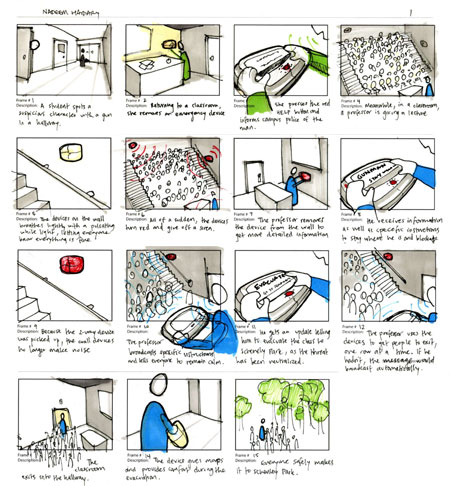Sketching storyboards in the design proccess

Storyboards are graphic organizers such as a series of illustrations or images displayed in sequence for the purpose of pre-visualizing a motion picture, animation, motion graphic or interactive media sequence, including website interactivity.
The storyboarding process can be very time-consuming and intricate. The form widely known today was developed at the Walt Disney studio during the early 1930s. In the biography of her father, The Story of Walt Disney (Henry Holt, 1956), Diane Disney Miller explains that the first complete storyboards were created for the 1933 Disney short Three Little Pigs. According to John Canemaker, in Paper Dreams: The Art and Artists of Disney Storyboards (1999, Hyperion Press), the first storyboards at Disney evolved from comic-book like “story sketches” created in the 1920s to illustrate concepts for animated cartoon short subjects such as Plane Crazy and Steamboat Willie, and within a few years the idea spread to other studios.
According to Christopher Finch in The Art of Walt Disney (Abrams, 1974), Disney credited animator Webb Smith with creating the idea of drawing scenes on separate sheets of paper and pinning them up on a bulletin board to tell a story in sequence, thus creating the first storyboard. The second studio to switch from “story sketches” to storyboards was Walter Lantz Productions in early 1935 [1], by 1936 Harman-Ising and Leon Schlesinger also followed suit. By 1937-38 all studios were using storyboards.




